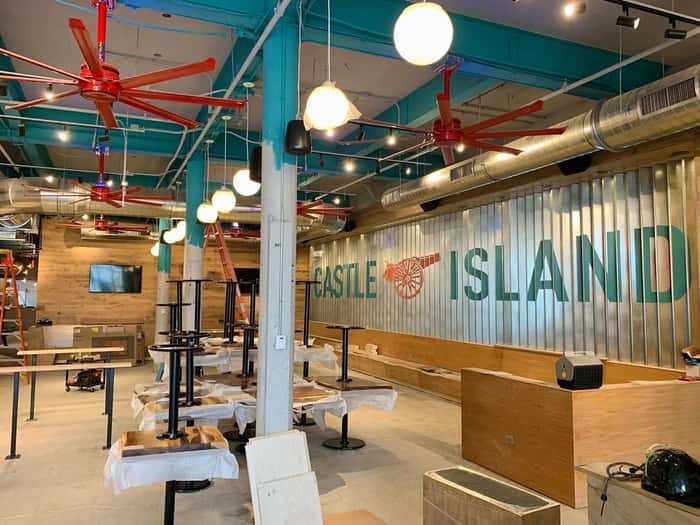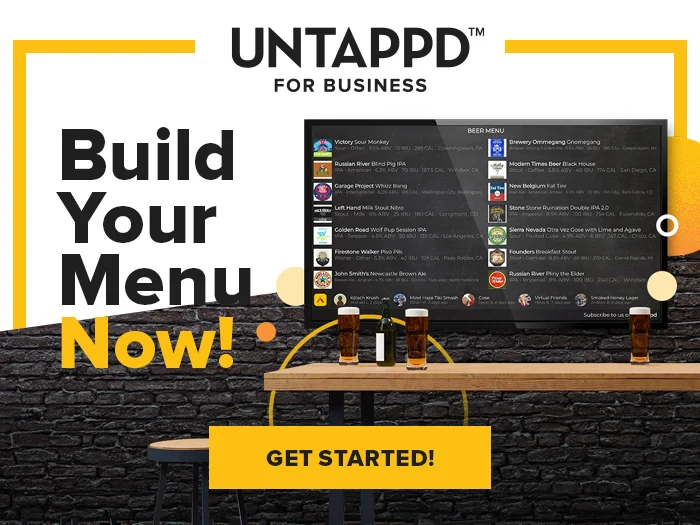
How to Start a Brewery in 2024
UPDATED: 2/26/2024
Without a doubt the craft beer industry has faced some serious headwinds over the past few years. Overall, the Brewers Association reports that in 2022 the industry has seen “mixed signs of recovery.” According to the organization’s Year in Beer 2022, there are now 9,500 breweries operating in the United States, with 550+ new ones opening and only 200+ closing in 2022.
With so many breweries in the marketplace, the road to success isn’t the unpaved path it used to be. We’ve seen former financial advisors, consultants, head brewers, and many more all begin their own businesses. But whether you’re looking at a serious career change or a brewer taking the next step, the question remains the same: Where do you begin when figuring out how to start a brewery?
In this comprehensive guide, we’ve laid out all the important considerations and steps you’ll need to take if you’re looking to open your own taproom or production space.
The Top 8 Digital Menus Designs of Untappd for Business
When was the last time you went to a restaurant, bar, taproom, or brewery tasting room and didn’t have a menu? That’s probably never happened. Menus are an integral part of the customer experience, telling you what’s available to order. But more than an ordering tool, menus—both digital and print—give an establishment the opportunity to showcase its brand.
An all-encompassing digital beverage platform, Untappd for Business feeds into the over 3,000,000-beer Untappd database, allowing any Verified Venue food/beverage facility to swiftly build a print, digital, or QR code menu to share with craft beer enthusiasts.
Additionally, the robust Untappd for Business tool provides easy access to data on the most popular beers in your region and recent industry trends, guiding decisions on which beer to stock or brew for your customers.
With Untappd for Business, you can access a world-class beer database, receive top-notch analytics, and create digital and print menus that will set your brand up for success.
How to Choose the Best TV for Digital Menu Boards (2023)
UPDATED: 1/27/23
As bars, breweries, and even restaurants have evolved, writing menus on chalkboards has become a thing of the past. Today, digital menu boards have become a streamlined, easy way to display what’s on tap, driving customer engagement and saving your team valuable time.
Digital menu boards can make an impression on your customers, ultimately adding to your bottom line. As one of the latest trends in digital signage, these boards can give customers a sleek, modern way to read what you have on hand and in stock.
While many establishments use a good ol’ fashion TV to show their offerings, there are plenty of options that are both reasonably priced and high quality. In fact, there may be too many options. But if the number of TVs on the market seem daunting, don’t fret.
We’ve sifted through the multitude of options to show you which ones are the best to display your menus.
After all, if you’re choosing to showcase some of the now three million beers in Untappd’s database on your digital menu board (as of 2023), you’ll want the best, most reasonably priced display.
Should Breweries Make Non-Alcoholic Beer?
A few years ago, a beer without alcohol in the United States seemed crazy. But today, non-alcoholic beer has become a growing trend in the U.S. So much so that many American craft breweries have taken a stab at making their own versions of non-alcoholic beer.
Beverage e-commerce site Drizly reported that NA category shares rose twenty-four percent on the platform year over year compared to the same period in 2021. More than one hundred non-alcoholic brands including beer, wine, cider, and spirits now live on Drizly, a seventy percent increase from last year. In the United States specifically, Statista reported that non-alcoholic brands contributed to over $414 million in sales.
While on a global scale, leading global alcohol industry market research firm IWSR reported in its IWSR Drinks Market Analysis that volume of no- or low-alcohol beverages grew by thirty-one percent year over year in 2022.
Basically, all signs point to non-alcoholic beer trending, if not growing into something more.
As a result, over the past few years, many craft breweries have added innovative, flavorful non-alcoholic beers to their portfolios. And entirely non-alcoholic beer brands are emerging in the market.
For instance, major established brands like Brooklyn Brewery, Boston Beer Co., and Dogfish Head have all crafted their own NA beers.
And solely non-alcoholic beer producers such as Athletic Brewing Co. are changing the status quo.
We predict this beer trend will continue to grow and that soon Americans will be drinking non-alcoholic beer all year round. So now the big question becomes: Is it worth your brewery investigating and investing in starting a non-alcoholic beer line?
10 Most Popular Beers and Venues in San Diego, CA
With over 9 million registered users, Untappd can easily tap into the trends and insights of drinkers in your city, state, region, and beyond.
Untappd’s Analytics discovers beers Untappd drinkers are consuming the most in your area along with what styles are trending and which are taking a turn downwards. And so much more.
Tap into all the data of the world’s largest craft beer social networking platform to help you make business decisions about what beers to make, which to put on tap, or even which to stock on the shelf.
With Untappd for Business, gain insights that you can’t find elsewhere. Make better decisions based on live, local data. Sign up for a free 7-day trial now.
Get a sneak peek into what Untappd’s Analytics can show you as we take a look at the checked-in beers in San Diego, CA, over the last ninety days.
And if San Diego isn’t your city, we also have guides available for the following cities:
The 4 Best Ways Professional Brewers Are Recycling Spent Grain
In 2015, New Belgium made 73 million pounds.
And Goose Island generated about 192,000 pounds weekly.
For every 6-pack of beer brewed, we’re left with one pound of this.
What common ingredients are all these breweries producing?
Dubbed “spent grain,” this offshoot of beer making has created a worrisome question for brewers: How to recycle one of the main residuals of their beers?
It’s a challenge, but one that professional breweries across the country are solving in creative ways.
Everything You Need to Know About Pint Glasses
When it comes to serving beer, glassware is important. Just like when a bartender makes an Old Fashioned or Margarita, they pour each respective drink into the right cocktail glass.
And while people in the industry debate the pros and cons of pint glasses, there is no denying that pint glasses are commonly used.
Plus, a pint is a ubiquitous industry measurement, meaning as a brewery, bar, or restaurant owner you should be familiar with this metric. But exactly how much is a pint? And why does the size differ depending on where you are?
Plus, what are the pros and cons of pint glasses? And what might be a good solution to the traditional pint glass?
We’ll break everything down in our guide to pints.
The Ultimate Guide to Cocktail Glasses
Certain cocktails benefit from a wide range of glasses that enhance both their appearance and taste. Picking the right drinkware boosts a beverage’s aroma and temperature. All this means that using the right cocktail glass is incredibly important.
But what type of glass does your bartender need for some of the most common cocktails on your bar’s menu?
Read on to learn about the most common types of cocktail glasses and how their design brings out different aspects of each beverage.
How Unique RV Membership Club Harvest Hosts Is Helping Breweries Survive the Pandemic
Ever dreamed of camping out at your favorite brewery?
A unique RV membership program, Harvest Hosts gives you access to a network of breweries, wineries, farms, museums, and more, inviting RVers to visit and stay overnight.
During the global pandemic, when travel has been limited, RVing has been a great way for people to get out and live life. According to a study conducted by the global market research company Ipsos, last summer, forty six million Americans said they planned to hit the road in owned or rented RVs over the next twelve months.
Harvest Hosts gives “ members ” or self-contained campers (those that provide their own electricity, bathrooms, water, etc.) an opportunity to stay in exciting locations as opposed to big store parking lots or overcrowded campgrounds.
Most importantly, Harvest Hosts has been making a big impact on the small businesses that its members visit. Because Harvest Hosts kindly suggests that any visitor purchase at least $20 of goods and/or services from their host — although the average member actually spends $50 during their stay, guests help generate revenue at breweries, often during off-peak hours or seasons. And Harvest Hosts has helped drive traffic to many out-of-the-way taprooms.
As breweries continue to look for strategic ways to boost their revenue streams, joining Harvest Hosts could be a fast, easy, innovative way to add to their bottom line.
7 Tips for Taking Your Homebrewing Hobby to the Professional Level
Do you dream of becoming a professional brewer? Of moving the carboys, stainless steel pots, auto-siphons, and pH meters from your garage or basement to an actual production warehouse or taproom? You’re not the first. In fact, many of the almost 9,000 breweries in the United States are owned by people who started as homebrewers and turned their hobby and passion into a professional career.
If you’re serious about going from a homebrewing hobby to professional brewing, you need to understand how to open a brewery. Here are some things to consider to help make your dream a reality.
